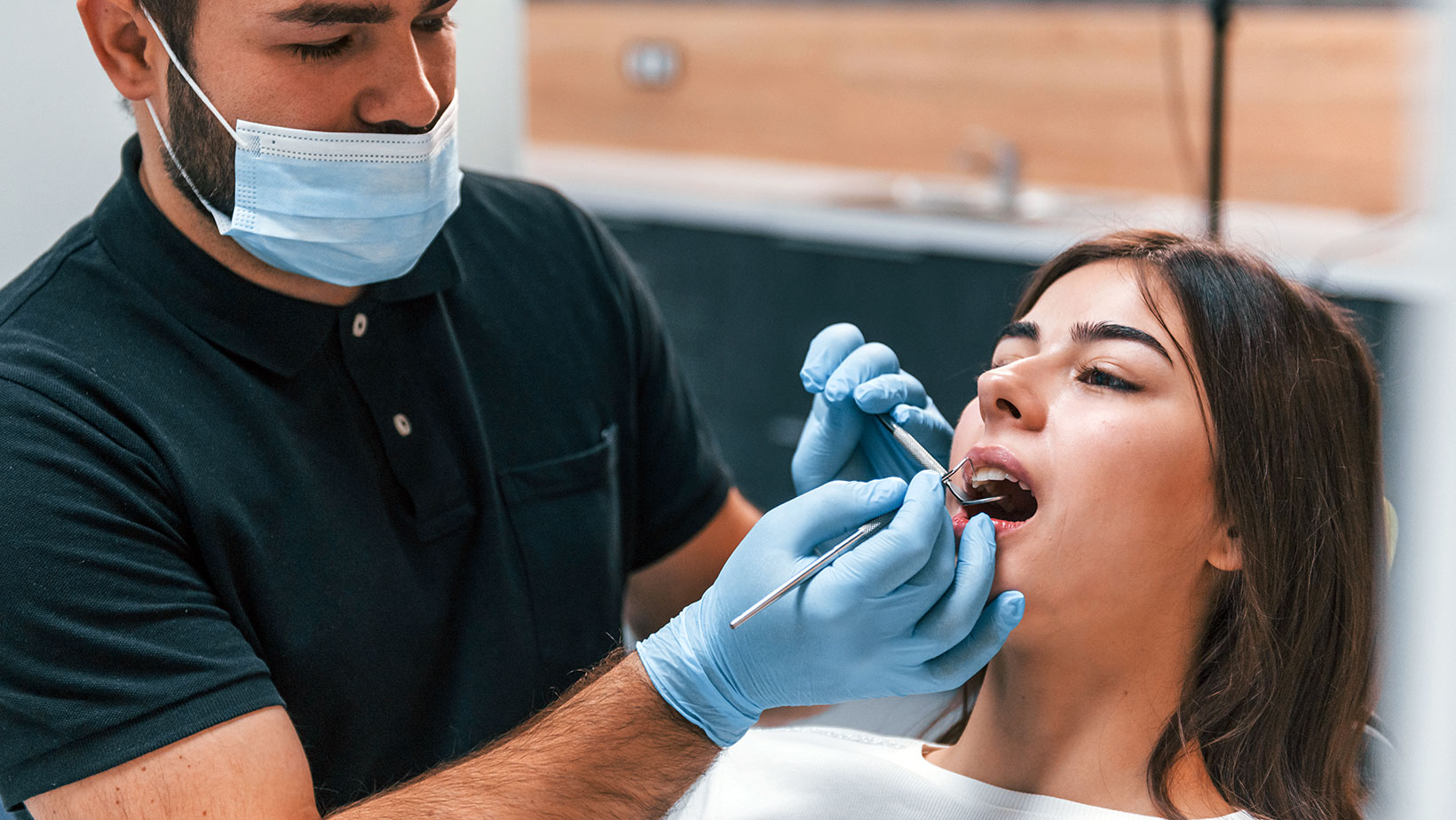Have you caught a glimpse of your smile in the mirror or a photo and noticed that one of your teeth looks darker than the rest? It might be gray, brown, yellow, or even bluish. It’s a common issue that can cause concern, and there are several reasons it can happen. Fortunately, there are solutions to get a single discolored tooth taken care of.
Common Reasons for One Dark Tooth
While overall tooth discoloration is often linked to everyday habits like coffee, smoking, or poor oral hygiene, a single dark tooth usually has a more specific cause. Here are the most common culprits:
1. Trauma or Injury
When a patient has suffered a hit to the face, whether from a sports accident, a fall, or even biting something too hard, trauma to a tooth may have resulted.
The force of the impact can damage the blood vessels and nerves inside the tooth (also known as the pulp). When this happens, the tissue may die and start to break down. This internal damage can lead to a gray, brown, or black discoloration over time. Even if the trauma happened years back, the effects can surface later. And just because there is no pain doesn’t mean there isn’t an issue—discoloration from trauma is a big red flag that every patient should get checked.
2. Pulp Necrosis (Nerve Death)
In many cases, a darkened tooth is the result of a condition known as pulp necrosis, essentially, the death of the nerve inside the tooth. This can happen due to trauma (as mentioned above) or severe tooth decay that reaches the pulp.
A dead nerve means that the tooth itself is no longer alive, which not only leads to discoloration but can also cause infection if left untreated. If your tooth is dark and starting to feel tender, loose, or has a bad taste around it, that could indicate a more serious problem like an abscess.
3. Previous Dental Work or Root Canal Treatment
If you’ve had a root canal on a tooth that is now darkening, the discoloration might be caused by leftover blood or dental materials inside the tooth. Over time, these can give the tooth a dull or dark appearance.
Root canals save the tooth, but without the pulp, it’s not nourished like the others. Some older root canal treatments may not have been sealed as well as modern techniques allow, which can result in staining from the inside out.
4. Tooth Decay
Sometimes, what appears to be a dark tooth is actually a visible cavity or advanced decay. If bacteria break down the enamel and reach deeper layers of the tooth, it can start to appear brown or black. In this case, the discoloration is more obvious on the surface level and might be accompanied by sensitivity or pain when eating or drinking.
If caught early, a simple filling may fix the issue. But if the decay has spread to the pulp, a root canal or even extraction may be necessary.
5. Stains From Medications or Materials
Certain medications (especially tetracycline antibiotics taken during childhood) can cause internal tooth discoloration. While this usually affects multiple teeth, sometimes it may be more visible on one tooth due to how the medication was absorbed or how the tooth developed.
Old metal fillings, particularly amalgam fillings, can also leach a dark tint into the surrounding tooth structure over time.
Should You Be Worried About a Single Dark Tooth?
Yes, at least enough to get it checked out. It may seem like just a cosmetic issue, but a single discolored tooth can be a symptom of something deeper, like nerve damage, infection, or internal decay. Even when a patient is not in pain, the health of their tooth may still be at risk. Early diagnosis is key. The sooner the patient catches it, the more likely they are to save the tooth and avoid more invasive procedures.

How Dentists Diagnose the Problem
When you visit a dentist for a dark tooth, whitening one tooth is not the solution; a dental professional will usually do the following:
- Take an X-ray to check the internal health of the tooth
- Test for vitality, such as using cold or electric pulp testing
- Check for cracks, decay, or signs of infection
- Review your dental and trauma history
From there, a dental professional can determine the root cause and recommend a solution.
Treatment Options for a Dark Tooth
Depending on what’s causing the tooth discoloration, your dentist may recommend one or more of the following:
Used for non-vital (dead) teeth that have undergone root canals. A bleaching agent is placed inside the tooth to whiten it from the inside out.
Professional Whitening
While whitening one tooth isn’t always the best option, professional teeth whitening may help even out the color if the tooth is alive and stained externally.
Dental Bonding or Veneers
For stubborn or deep discoloration, cosmetic solutions like bonding or porcelain veneers can cover the dark tooth and blend it with the rest of your smile.
Root Canal Treatment
If the nerve is dead or infected, a root canal will remove the damaged tissue and preserve the tooth’s structure.

Don’t Ignore the Signs. See a Dentist if You Have a Single Discolored Tooth
A single dark tooth may not seem like a big deal, especially if it doesn’t hurt. But your body has a way of sending quiet signals before bigger issues arise. A darker tooth is often one of those signs.
If you notice a tooth that’s different in color, especially if it’s turning gray, brown, or black, you should schedule a dental check-up as soon as possible. With modern treatments, you can restore both the health and appearance of your smile quickly and painlessly.


